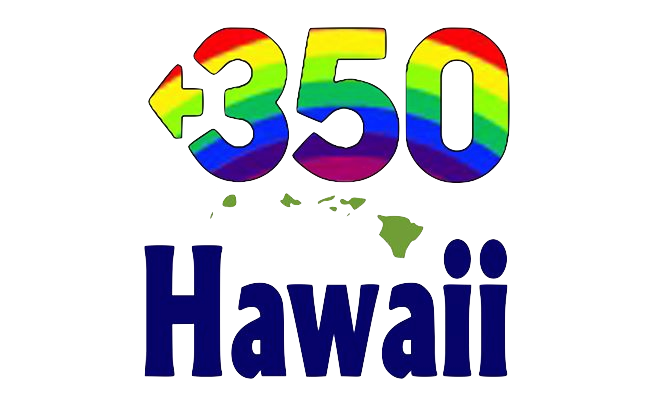
Please sign our petition at https://actionnetwork.org/petitions/permits-and-public-hearings-for-hu-honua!
Hu Honua is nearing completion of construction of a wood-burning power plant on the Big Island that would create more CO2 emissions than burning coal; wastewater with over two dozen hazardous chemicals injected less than 100 feet from the cliff shoreline; and harmful deforestation, just when we need our forests the most to sequester carbon.
The tainted wastewater would percolate into the aquifer as well as through the porous cliffs of the Hamakua Coast, and into coastal waters. Hu Honua also intends to allow stormwater to flow off its toxin-laden industrial site, through cliff-side outfalls and then down into coastal waters. The hazardous chemicals they intend to add to the water before injecting it carry manufacturer’s warnings against mixing in waterways or aquatic ecosystems.
The company plans to clear-cut five acres of eucalyptus trees every day, and truck them 50 miles (using 30 trucks) to be burned for electricity. The trees they’re replanting will take 20-100 years to capture the same amount of carbon that was released during burning. That is far too long to be considered “renewable.” Further, the clearcutting of carbon-sequestering trees will create a serious risk of erosion during heavy rains. We cannot let this go forward.
Because its facility falls on public land, Hu Honua must submit an EIS (Environmental Impact Statement), but refuses to do so. The State seems happy to let them get away with it if we don’t speak out.
The Dept. of Health is now considering granting Hu Honua with two federally required NPDES permits (National Pollutants Discharge Elimination System) to release wastewater into coastal waters and waterways. We are almost at the end of a 30-day comments period regarding the issuance of an NPDES permit for its storm-water outfalls. The deadline for MUCH NEEDED comments is 10/6/18. Please request a public hearing and demand an EIS! Tell the DOH you oppose issuance of the NPDES Permit No. HI S000557.
Email cleanwaterbranch@doh.hawaii.
Act now! The deadline for comments is 10/6/18.
Sample email:
BACKGROUND (MAINLY FROM https://www.civilbeat.org/2017/08/alan-mcnarie-burning-eucalyptus-to-power-the-big-island/ AND https://www.civilbeat.org/2018/09/big-island-wood-burning-power-plant-raises-environmental-concerns/):
Hu Honua Bioenergy’s plant will extract 21.6 million gallons of nondrinkable water daily from the Hakalau aquifer, circulate it once past a steam turbine and other equipment, and then re-inject it into the ground, according to company documents.
The State Dept. of Health granted Hu Honua permission to dispose of wastewater and over a dozen hazardous chemicals via injection wells, less than 100 feet from the cliff shoreline. The tainted wastewater will percolate into the aquifer as well as through the porous cliffs, and into coastal waters.
Water consumption for the entire district of North Kona is only 11 million gallons of water per day. Hu Honua also intends to allow storm-water to flow off its toxin-laden industrial site, through cliff-side outfalls and then down into coastal waters.
Hazardous chemicals such as morpholine, carbohydrazide and sodium nitrate, which carry manufacturer’s warnings against mixing in waterways or aquatic ecosystems, will be added to water sent to the plant’s boiler to control acidity, prohibit corrosion and prevent scale buildup, according to information Hu Honua filed in February and later revised in May with its application for an underground injection control permit.
Adding trace amounts of chemicals, some of which are hazardous, to the heated water and then pumping it 400 feet below the ground will kill near-shore marine life, possibly pollute drinking water sources and could destabilize sea cliffs about 50 yards downslope from the plant.
Portions of the cliffs recently collapsed from the 50-plus inches of rain from Hurricane Lane, sending tons of debris into the ocean and likely onto any coral living there.
“I don’t see why we have to sacrifice our aquifer, sacrifice our land and sacrifice our air to somebody who doesn’t even live here,” project opponent Koohan Paik-Mander said of the plant’s new California-based investor.
The state Public Utilities Commission’s approval of a power-purchase agreement between Hu Honua and HELCO has been appealed to the Hawaii Supreme Court. The environmental group Life of the Land filed the challenge, alleging the PUC failed in its legal mandate to address greenhouse gases the plant will emit by burning eucalyptus trees.
Pending in Big Island Circuit Court is a lawsuit by Claudia Rohr, a Hilo resident and bed-and-breakfast owner, filed last November against the Hawaii County Planning Department for not requiring the project to undergo an environmental impact statement or a lesser environmental assessment.


